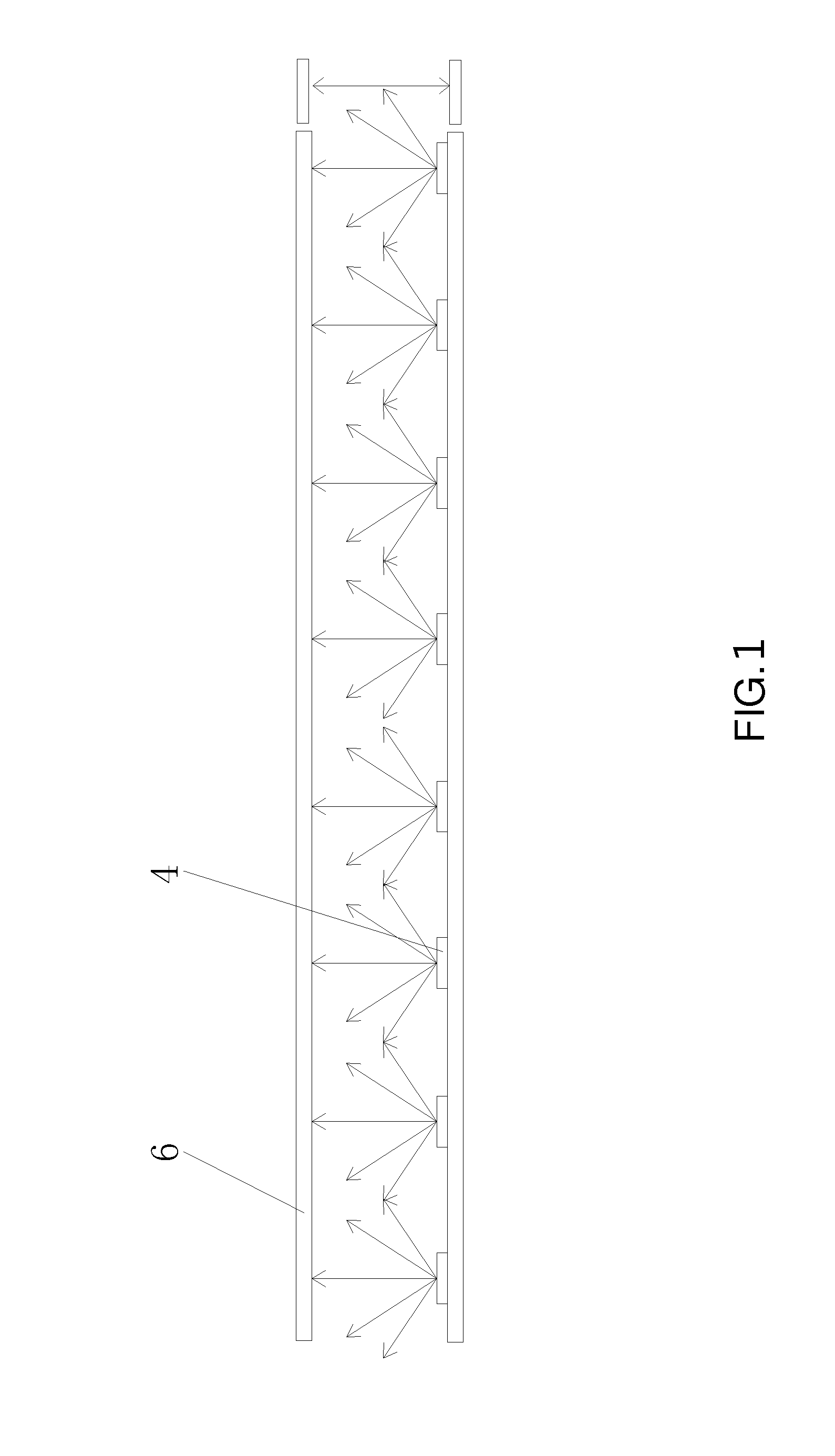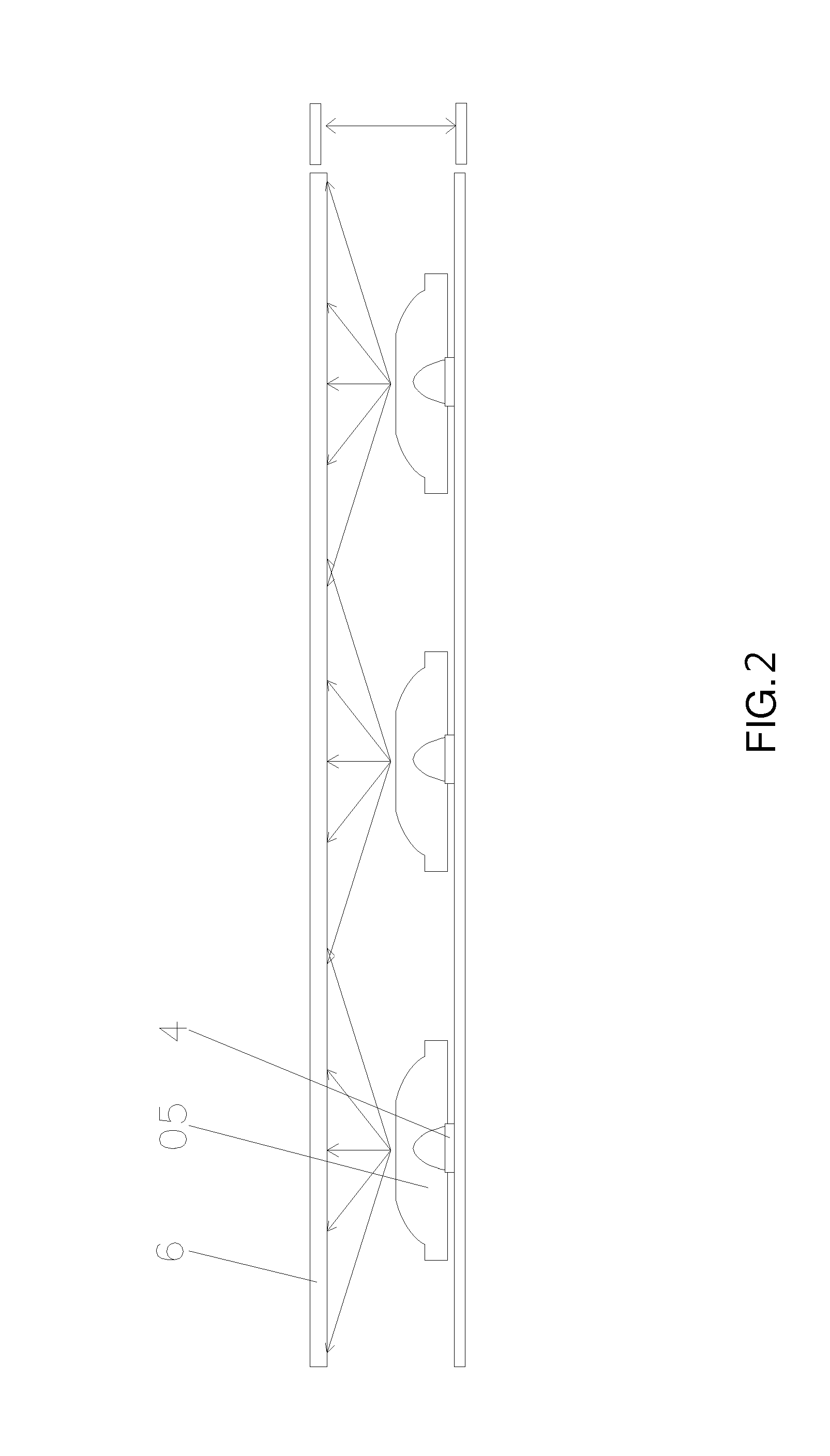Optical Lens
- Summary
- Abstract
- Description
- Claims
- Application Information
AI Technical Summary
Benefits of technology
Problems solved by technology
Method used
Image
Examples
first embodiment
The First Embodiment
[0067]Please refer to FIG. 13. In the first embodiment, the light diffusing structure 5 is disposed on the curved surface of the bottom surface 1 of the optical lens. Part of light rays “a” refract outward when passing through the incidence surface 3 then refract outward again when passing through the emergence surface 2, so that light would be diffused. Part of light rays “b” reflect when reaching the emergence surface 2. When reaching the curved surface on the bottom surface 1, the reflected light rays “b” reflects again toward outsides and away from the center axis of the optical lens. As a result, the intensity of light near the central axis can be decreased and the distribution of light near the central axis projected on the optical film set 6 (the light receiving surface) is evenly
[0068]When a gap between an emitting surface of the light source 4 and the bottom surface 1 of the optical lens is greater than 0, Part of light rays “c” which pass through the ga...
second embodiment
The Second Embodiment
[0070]Please refer to FIG. 15. The light diffusing structure 5 includes a plurality of concave points distributed continuously. When passing through the gap and the bottom surface 1, light rays can be diffused by the light diffusing structure 5 so that the bright circle caused by the gap can be avoided.
[0071]Please refer to FIG. 16. The distance of the gap between the light source 4 and the bottom surface 1 of the optical lens is 0.2 mm. The optical lens does not have any light diffusing structure (the same as the optical lens shown in FIG. 8). The bright circle is obvious in the brightness distribution.
[0072]Please refer to FIG. 17. The distance of the gap between the light source 4 and the bottom surface 1 of the optical lens is 0.2 mm. FIG. 17 is a diagram of brightness distribution of the optical lens which has light diffusing structure 5 disposed on the curved surface of the bottom surface 1 and including the plurality of concave points distributed continuo...
third embodiment
The Third Embodiment
[0074]Please refer to FIG. 18. The light diffusing structure 5 includes a plurality of convex points distributed continuously. When passing through the gap and the bottom surface 1, light rays can be diffused by the light diffusing structure 5 so that the bright circle caused by the gap can be avoided.
[0075]Please refer to FIG. 19. The distance of the gap between the light source 4 and the bottom surface 1 of the optical lens is 0.2 mm. The optical lens does not have any light diffusing structure. As shown in FIG. 19, the bright circle on the optical film set 6 (the light receiving surface) is obvious.
[0076]Please refer to FIG. 20. The distance of the gap between the light source 4 and the bottom surface 1 of the optical lens is 0.2 mm. The optical lens has light diffusing structure 5 disposed on the curved surface of the bottom surface 1 and including the plurality of convex points. As shown in FIG. 20, the bright circle projected on the optical film set 6 (the ...
PUM
 Login to View More
Login to View More Abstract
Description
Claims
Application Information
 Login to View More
Login to View More - R&D
- Intellectual Property
- Life Sciences
- Materials
- Tech Scout
- Unparalleled Data Quality
- Higher Quality Content
- 60% Fewer Hallucinations
Browse by: Latest US Patents, China's latest patents, Technical Efficacy Thesaurus, Application Domain, Technology Topic, Popular Technical Reports.
© 2025 PatSnap. All rights reserved.Legal|Privacy policy|Modern Slavery Act Transparency Statement|Sitemap|About US| Contact US: help@patsnap.com



